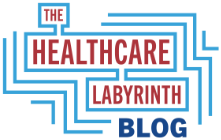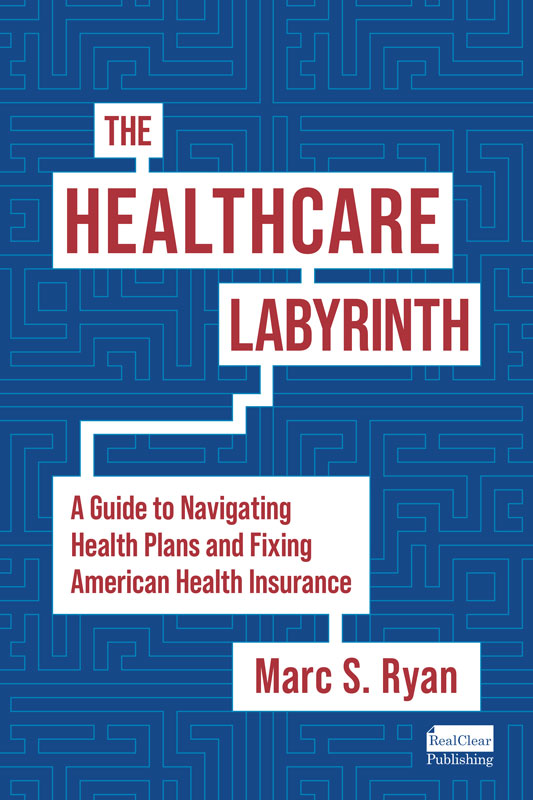While healthcare has been displaced by other economic issues and immigration as the compelling Election 24 issues of the day, I have taken the position that healthcare could very well play a role in this year’s election outcome. How so?
How close is it?
Let’s take a look at how close things are for the presidency and the houses of Congress. For reliable forecasts on elections, I always go to at RealClear Politics. It is very reliable and unbiased. I also like the fact it uses polling averages to determine the current prospects of various political contenders. In addition, I have a special connection as its publishing arm, RealClear Publishing, was one of the publishers of my book, The Healthcare Labyrinth (available via this site).
I went to RealClear Politics for the presidential and Senate races and looked at a few other sources for the House races.
Presidential race – As of this writing on May 23, RealClear Politics says that the current poll average has former President Doanld Trump up just under one percentage point in a head-to-head matchup with President Biden – a close popular vote race. However, the five-way-race poll average favors Trump by 2.2 percentage points in the popular vote. Despite his Democratic party status, most polls show that Robert F. Kennedy Jr. seems to hurt both Biden and Trump. But the other two candidates tend to steal more from Biden.
As for the electoral college – what really matters – without toss-up states, Trump leads Biden 219 to 215. But in seven toss-up states, Trump appears ahead in the polls by anywhere between 0.1 to 4.7 percentage points, or an average of about 3.0 percentage points. State polls are notoriously unreliable, but right now that would give 312 electoral votes to Trump and 226 for Biden. Admittedly, this is all speculative right now; the movement of two or three states could give either side enough electoral votes to win. Polls are tightest in Wisconsin (Trump 0.1 up), Michigan (1.0 up), and Pennsylvania (2.1 up). Trump would need to win one of these states unless you believe New Hampshire is in play for Trump. Or you believe Trump could win all of Nebraska’s split electoral votes and one Maine split vote stays with Trump. That results in a 269-269 tie. The House of Representatives would decide the election, with each state casting one vote. Right now Republicans control the House delegations 26-22, with two split. But that could change in the 2024 election.
One word of caution here: both the popular vote and electoral map predictions could change if the former president is convicted in a New York court of up to 34 felonies.
Senate – The Senate theoretically looks good for Republicans. Right now there is a 50-50 split, with the Democrats in control (with two independents) due to the Vice President being Democrat. Republicans have a very good chance of winning 49 seats, with Democrats looking very good for 42 seats. That leaves nine toss-ups. I don’t buy that Sen. Ted Cruz will lose in Texas, so that would give the GOP 50 votes. If a Republican wins the presidency, Republicans control the chamber. But to truly assure control, the Republicans need to win one of eight states.
All eight of these states have Democratic incumbents today and thus Democrats cannot lose any. Some of these seats are in Red States (OH, MT) or states that look to be going or could go Trump’s way this year (NV, AZ, MI, WI, PA). In Maryland, popular former GOP Gov. Larry Hogan could win in a deep Blue state. In essence, everything would have to go right for Democrats in the Senate races and the White House likely would have to stay Democrat for them to maintain control of the upper chamber. But the incumbent Democrats are formidable and the GOP is hurt by some far-right primary winners in these toss-up states.
House – The House is a crap shoot. Political gerrymandering has made most congressional districts solidly Blue or Red. Right around 90% of all House seats are Safe or Likely Holds for either party. That leaves about 50 seats or so that are ever in play. The generic ballot right now is tight, but slightly favors Democrats (by 0.4 percentage points).
Looking at a number of House reviews, Republicans appear to have about 210 or 211 seats that are Safe, Likely or Lean Republican. Democrats appear to have between 202 to 207 seats that are Safe, Likely, or Lean Democrat. That leaves 17 to 23 seats that are highly contested toss-ups. Republicans would need to a third to half of the toss-up races to win control of the chamber; Democrats would need between one half and all of the seats to win the chamber. Democrats’ numbers look bad, but many of the toss-ups are in deep Blue states. Some of them, too, are in the close presidential states, where shifting polls could impact congressional districts. This makes who controls the chamber much closer than you would think. And remember that the GOP underperformed demonstrably in 2022.
So what does all this mean?
The election is close once again, at least for the presidency and the House races. House control could come down to a set of swing districts. The presidential race could come down to a few dozen counties in a small number of states. As I have maintained, that is where healthcare issues could come in to impact results. Many of the voters in these swing districts or counties may be philosophically disposed to choose a candidate that espouses their views on healthcare. And in comes the latest Kaiser Family Foundation (KFF) Tracking Poll. On an ongoing basis, KFF asks American voters what their views are on critical healthcare issues. The latest results show the following:
- In general, President Biden is trusted more on healthcare issues than former President Trump. Here are some important general results on who is trusted more:
- Determine the future of the Affordable Care Act, or Obamacare – Biden 45%, Trump 33%
- Maintain protections for people with pre-existing health conditions – Biden 45%, Trump 33%
- Ensure access to affordable health insurance – Biden 43%, Trump 32%
- Determine the future of Medicaid – Biden 42%, Trump 33%
- Determine the future of Medicare – Biden 41%, Trump 33%
- Address high health care costs – Biden 38%, Trump 36%
- Notably, independent voters trust Biden more than the percentages above in all categories.
- While knowledge of the Inflation Reduction Act’s Medicare drug price is low, majorities across all parties want some extension beyond Medicare:
- Capping monthly out-of-pocket costs for insulin for all adults with health insurance – 86% of all voters
- Placing a limit on out-of-pocket prescription drug costs for all adults with health insurance – 84% of all voters
- The Medicare drug price negotiation law should be expanded by increasing the number of drugs subject to price negotiation – 75% of all voters, with 79% of Democrats, 80% of independents, and 68% of Republicans
- Entitlements are viewed favorably by the public:
- Medicare – 41% very favorable and 39% somewhat favorable
- Medicaid – 32% very favorable and 43% somewhat favorable
- Affordable Care Act (ACA)/Obamacare – 29% very favorable and 31% somewhat favorable (About a third of GOP voters hold favorable views.).
- Medicaid should largely continue as it is today – 70% of all voters, with 87% of Democrats, 74% of independents, and 50% of Republicans
- Changes to the ACA have mixed views:
- Extending financial assistance for people who purchase health coverage through the Affordable Care Act marketplace – 90% of Democrats, 74% of independents, and 57% of Republicans
- Repealing and replacing the ACA – 24% of Democrats, 51% of independents, and 76% of Republicans.
In general, the American public regardless of party affiliation support healthcare entitlements and drug price reform. They seem to give the bow to Biden as the best healthcare overseer.
The candidates understand the significance of healthcare issues. Biden recently went on the attack on healthcare issues, is clearly articulating his accomplishments and is arguing Trump will significantly pare back coverage throughout the healthcare system. Democrats are running healthcare ads in swing House districts as well as in Senate and presidential swing states. Trump has made some misstatements on Medicare and Social Security and quickly tried to calm the storm by clarifying what he said. But we are still months away before we know if healthcare resonated with voters and it impacted their votes.
KFF Tracking Poll: https://www.kff.org/medicare/poll-finding/kff-health-tracking-poll-may-2024-voters-views-of-health-policy-issues-in-context-of-presidential-campaigns/
Other reading: https://kffhealthnews.org/news/article/biden-health-care-ad-buy-obamacare-aca/
#healthcare #election2024 #biden #trump
— Marc S. Ryan





